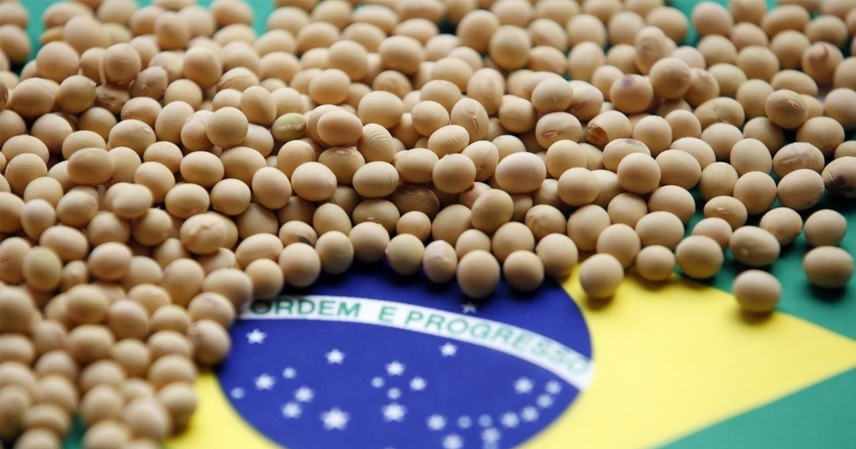A Sudden Shock in the Soybean Market
“Is Brazil taking advantage of the situation? Their soybean prices have soared way above U.S. levels—no wonder Chinese buyers are halting purchases!”
This comment, shared on October 19 by the account “Wang Wu Speaks”, quickly went viral across China’s grain and oil trading community. As the data spread, many were left wondering — why has Brazil, China’s largest soybean supplier, suddenly raised prices so sharply? And what lies behind China’s decision to suspend purchases?
The Geopolitical Context: Soybeans at the Heart of U.S.–China Trade Rivalry
To understand the move, one must start with the broader U.S.–China trade tensions. For years, soybeans have been a key battleground in the economic confrontation between the two powers.
On one hand, China can use import adjustments to pressure U.S. agriculture; on the other, it must secure domestic food supply. This has made countries like Brazil and Argentina crucial alternative suppliers.
But as China diversified its imports, new complications emerged. On October 17, the China Soybean Industry Association noted that domestic buyers had not booked any Brazilian soybean shipments for December 2024 or January 2025—simply because prices were too high.
How high? Brazil’s soybeans are currently priced $2.8–$2.9 per bushel higher than the November Chicago Board of Trade (CBOT) futures, while U.S. soybeans carry a much smaller premium of $1.7 per bushel.
This steep gap has severely strained Chinese soybean oil producers, many of which have already been operating at a loss since mid-2024. As one insider put it, “Brazil’s price hike is like adding salt to the wound.”
Online Reactions: Frustration and Strategy
The news immediately sparked heated debate among netizens. Some accused Brazil of taking advantage of China’s reduced U.S. imports:
“They know we’re avoiding American soybeans and are gouging prices. Not fair!”
Others viewed it more pragmatically:
“We relied too much on one country — now we’re paying the price.”
Yet many pointed out that the suspension of purchases was not a sign of weakness, but a calculated move:
“Our buyers are just waiting for the right moment. We still hold strong cards.”
And indeed, they do.
China’s Dual Strategy: Waiting for Opportunity
Chinese importers are pausing purchases while watching two key developments unfold.
First, they are anticipating a bumper soybean harvest in Brazil. Basic economics dictates that greater supply means lower prices. Brazil’s 2024/25 production is projected to reach 168 million tons, with exports up to 110 million tons. If yields meet expectations, market prices are likely to fall back to more reasonable levels.
Second, traders are eyeing potential progress in U.S.–China trade negotiations. Should restrictions on U.S. soybean imports be relaxed, supply options would immediately broaden. Despite lower volumes than in 2017, China still imported 22.1 million tons of soybeans from the U.S. in 2024 — a reminder of America’s enduring capacity as a major supplier.
With the U.S. as an alternative source, Brazil would have limited room to maintain inflated prices.
National Reserves: China’s Hidden Advantage
Beyond waiting for market shifts, China holds a powerful stabilization tool — its national soybean reserves.
If market prices rise too sharply or supply tightens, Beijing can release strategic reserves to boost supply and stabilize prices. This mechanism ensures that domestic demand remains unaffected, effectively shielding the market from external shocks.
As one commentator noted, “Good thing we’ve got state reserves to rely on — otherwise, we’d be at their mercy.”
Why Not Just Grow More Soybeans at Home?
Some have asked the obvious question: “Why not just plant more soybeans domestically?”
The answer lies in limited arable land. Despite its vast territory, China’s per capita farmland is small, and much of it is prioritized for staple grains like rice and wheat — essential to national food security.
With urbanization accelerating, converting industrial or residential land back into farmland isn’t feasible. Diverting land from staple crops could lead to import dependency on core grains, posing even greater risks to food security.
Multi-Source Imports and Technological Substitution
Fortunately, Brazil’s price hike has limited short-term impact. China has already built a diversified import network, sourcing soybeans not only from Brazil but also Argentina, Uruguay, and Canada. Combined, these countries accounted for around 7% of China’s soybean imports in 2024.
Meanwhile, technological innovation is reducing dependence on soybeans. The use of rapeseed meal and cottonseed meal as substitutes for soybean meal in animal feed has risen to 15%, cutting overall reliance on soybean protein.
For example, New Hope Group, one of China’s leading agribusinesses, reported that less than 2% of its feed raw materials now come from the United States, thanks to domestic alternatives and diverse sourcing.
Expert Insights: Strategic Calm in a Volatile Market
Industry experts argue that Brazil’s price hike, while opportunistic, has backfired by highlighting the risks of single-source dependency.
China’s response — leveraging market pressure, strategic reserves, and technological substitution — shows a well-calculated, multi-layered strategy that keeps the initiative firmly in its hands.
As one analyst summarized, “China isn’t reacting emotionally. It’s waiting patiently for prices to normalize — and when they do, it will re-enter the market from a position of strength.”
Conclusion: Resilience Over Reaction
At its core, this soybean dispute reflects a deeper contest over supply chain resilience. Brazil’s attempt to capitalize on China’s shifting import patterns may have seemed like smart timing, but it risks damaging long-term trust with its largest customer.
China, by contrast, is demonstrating that strategic patience, diversification, and technological innovation are the real foundations of food security.
Once global conditions stabilize — whether through a bumper Brazilian harvest or renewed U.S. trade access — soybean prices are likely to return to rational levels. And when they do, China’s multi-tiered supply system will emerge stronger than ever.



